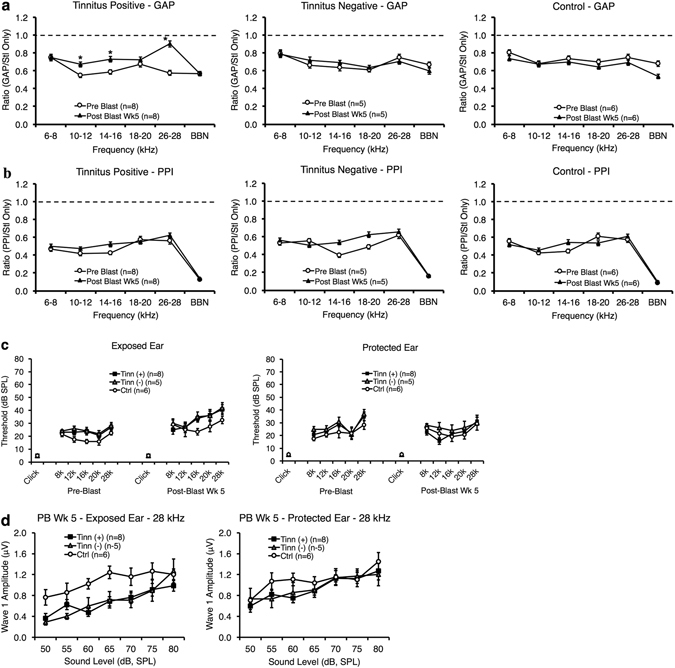Figure 1.

Some blast-exposed rats exhibit tinnitus behavior, while there were no observed differences in hearing impairment between tinnitus(+) and tinnitus(−) rats. (a,b) Gap-detection (a) and PPI ratio values (b) are shown for both pre-blast and post-blast week 5 for the tinnitus(+), tinnitus(−), and control (ctrl) groups. Tinnitus(+) rats exhibited moderate tinnitus between 10–16 kHz and robust tinnitus at 26–28 kHz. No significant increases in post-blast PPI ratio values were seen for any group. The dotted line indicates a ratio value of 1, or maximum tinnitus (GAP) or auditory detection deficits (PPI). (c) ABR thresholds were measured in response to click and tone-burst stimuli before blast exposure and at 5 weeks after blast exposure. Despite some moderate differences, there were no significant threshold differences between any group for any ear, time point, or frequency. (d) ABR wave P1-N1 amplitudes were plotted as a function of sound intensity in blast-exposed and plug-protected ears for the tinnitus(+), tinnitus(−), and control groups. Amplitude reductions in blast-exposed ears were observed across most intensities in tinnitus(+) and tinnitus(−) rats compared to controls. No significant differences, however, were found in plug-protected ears. For all graphs, error bars represent the standard error of the mean. * indicates specific significance (p < 0.05).
